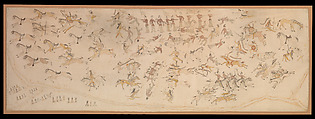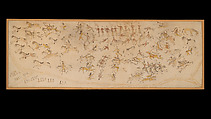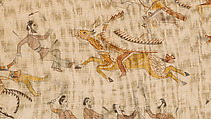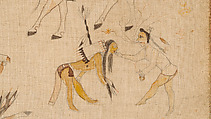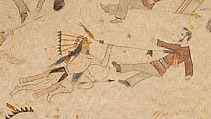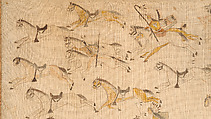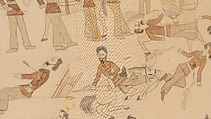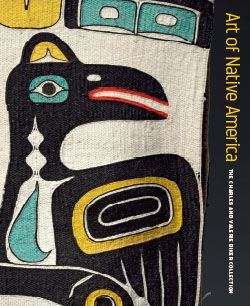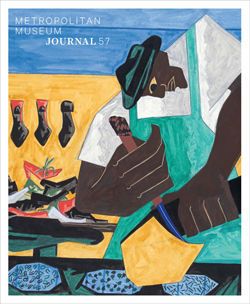The Battle of the Little Bighorn
Standing Bear/ Mató Nájin Minneconjou Lakota/Teton Sioux
On June 25, 1876, a combined force of Cheyenne and Lakota warriors destroyed the command of U.S. Lieutenant Colonel George Armstrong Custer. His troops had attacked their village of camp circles stretching along the Little Bighorn River in what is now Montana. Sixteen-year-old Steven Standing Bear took part in the battle and observed the chaos depicted here. He created this sweeping representation more than forty years later, combining six conflict episodes into one scene with highly detailed individual warriors and soldiers. Although members of Custer’s troops are known to have worn buckskin jackets, Standing Bear depicted only one figure in the fringed, pale-yellow garment (at center), surely intended to represent Custer himself.
Due to rights restrictions, this image cannot be enlarged, viewed at full screen, or downloaded.
This artwork is meant to be viewed from right to left. Scroll left to view more.
